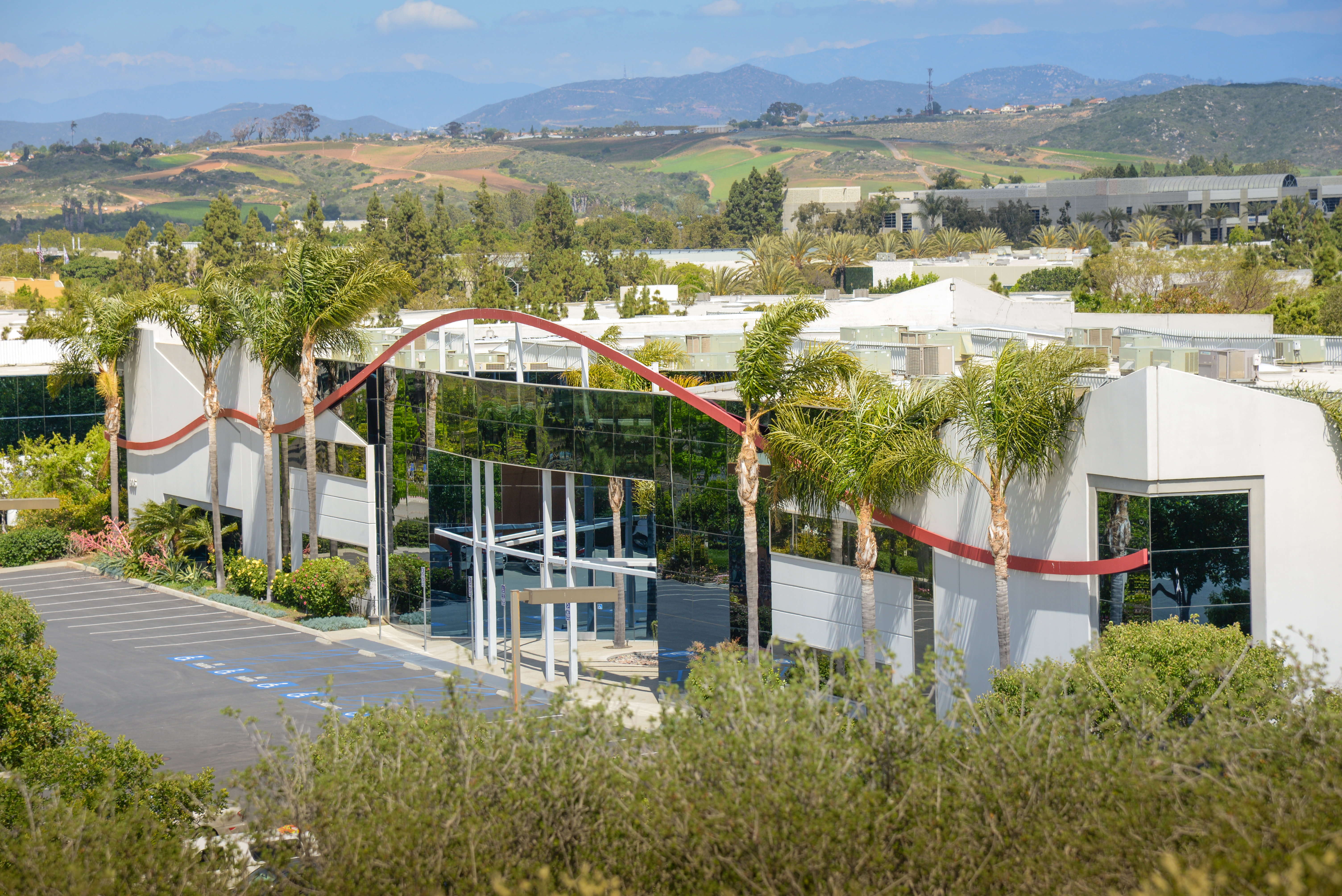Daily Business Report-June 22, 2016
An Airbus A340-300 will fly twice a week between Zurich and San Diego and connect the two cities directly.
Edelweiss to Begin Nonstop Seasonal
Service Between Zurich and San Diego
Edelweiss, Switzerland’s leading leisure airline, is further expanding its route network to North America, offering flights to San Diego beginning June 9, 2017.
An Airbus A340-300 will fly twice a week between Zurich and San Diego and connect the two cities directly. The new connection allows Swiss and European tourists to reach San Diego in a comfortable way. “California is very popular among Swiss tourists,” says Bernd Bauer CEO of Edelweiss. “Swiss travelers like to stay longer and spend more money during their time on vacation than visitors from other countries. Our flights will bring approximately 15,000 visitors to San Diego per year, creating an economic impact of around $50 million per year.”
“We are excited to welcome Edelweiss, a Lufthansa group carrier, to San Diego’s growing list of international airlines,” said Thella F. Bowens, San Diego International Airport’s president/CEO. “This new service to Switzerland means San Diegans will have direct flights to six countries from San Diego International Airport. Each of these global markets brings significant economic benefits to the San Diego region.”
The flight not only opens San Diego to Swiss and European visitors, but it also offers a convenient nonstop flight for Americans to the heart of Europe with many connection possibilities to other European cities beyond Zurich.
________________________________________________

One Paseo Developer to Present
Revised Project at Public Hearing
By City News Service
After being forced back to the drawing board, the developers of the One Paseo project in Carmel Valley are scheduled to return to the San Diego City Council for a public hearing next week, council President Sherri Lightner announced Monday.
The City Council gave the mixed-use project — on an empty 23.6-acre lot south of Del Mar Heights Road, between El Camino Real and High Bluff Drive — its backing early last year but opponents collected enough signatures to force the approval to be rescinded.
Opponents were concerned that the project’s density would worsen traffic in an already congested part of town.
Developer Kilroy Realty says the new design would attract half the daily vehicle trips of the original plan, increase setbacks from main roads and improve landscaping. The plan incorporates 608 housing units, 280,000 square feet of office space and 95,000 square feet of retail.
The number of housing units is the same as the original project, but proposed office and retail space is down by more than half.
“I am encouraging residents in Carmel Valley and the surrounding area to participate in the council hearing on June 27,” Lightner said. “This project is important to the community, and we would like to make sure all the voices are heard.”
The hearing is scheduled to begin at the unusual time of 1 p.m., and will take place at Golden Hall to accommodate an expected large crowd.

Carlsbad Industrial Building Sells for $7.55M
A multi-tenant industrial building in the Carlsbad Research Center has ben sold for $7.55 million. The R&D/Bio-Med building at 1905 Aston Ave. features 48,551 square feet of rentable industrial flex and office space, situated on 3.38 acres of land.
The seller was H&M Eagle LP. The buyer was Alvarez & Marshal Capital Real Estate LLC.
At the time of the sale, the property was approximately 41 percent leased.
A portion of the building is occupied by Advanced Biologics (also known as Implant Innovations). Advanced Biologics is in the process of making the space its primary manufacturing facility.
Lee & Associates represented the seller.
Tyson & Mendes Firm Acquires
New La Jolla Building
Law firm Tyson & Mendes announced the expansion of their San Diego offices with the acquisition of the building at 5786 La Jolla Blvd. in La Jolla.
The seller of the 7,900-square-foot, two-story building was Mesh Properties LLC. Former tenants included the Ted Waitt Foundation and Avalon Capital Group Inc.
The firm will maintain their headquarters in San Diego at the original Bird Rock location at 5661 La Jolla Blvd.
Bob Tyson, founder and Partner of Tyson & Mendes, said the acquired building is the site of the old Milligan’s restaurant.
Currently, the firm employs 45 attorneys throughout California, Arizona, Nevada, and Colorado, with plans for continued growth throughout the West.
Two Developers Partner to Build
8-Home Community in Carlsbad
Presidio Residential Capital and Pebble Creek Companies have partnered to build Afton Way, a new five-acre community with five single-story and three two-story homes at 2200 Afton Way in Carlsbad.
Afton Way is set to break ground in October. Home sales are scheduled to open in February 2017, and the project is expected to be completed by July 2017. The developers said the retail value of the residential community will exceed $9.5 million.
This is the first project Presidio has collaborated on with its new joint venture partner Pebble Creek.
The homes will be built on 10,000- to 29,000-square-foot lots, with an average lot size of 15,000 square feet. They are replacing one single-family home that was located on the property. The community will include 53,500 square feet of open space.
According to the National Association of Home Builders’ formula to determine the local impact of single-family housing in typical metro areas, adding eight single-family homes will generate $2.3 million in local income, $288,000 in taxes and other revenue for local governments and 32 local jobs.
Report Says Adult Entertainment Industry
Has $70M Impact on San Diego Economy
By City News Service
A group of adult entertainment business owners are scheduled to release a report Thursday that says their industry has a $70 million annual impact on San Diego’s economy.
The San Diego Hospitality and Entertainment Coalition said the study was conducted to determine the impact of adult entertainment establishments on San Diego’s economy, examine crime rates and other police statistics between neighborhoods and adult entertainment businesses, and profile employees, customers and neighboring businesses regarding perceptions of adult entertainment establishments.
The report follows up on a 1995 study commissioned by the San Diego County District Attorney’s Office and San Diego Police Department, according to the coalition. The group hired Luth Research, the same firm that conducted the 1995 research.
“As business owners, we are excited to share the results of Luth’s recent study on our industry showing the positive impact to San Diego’s economy, over $70 million annually,” said Dino Palmiotto, coalition president. “The results of this report validate again what the San Diego Police Department also found in their study back in 1995.”
Details on the findings are scheduled to be revealed at a news conference in Kearny Mesa.
County OKs Plan to House
Mentally Ill Homeless
By City News Service
In an effort to improve services to San Diego County’s severely mentally ill homeless population, the Board of Supervisors Tuesday unanimously approved the Project One for All Implementation Plan that began earlier this year.
The plan includes a mechanism for county housing resources to be matched with homeless individuals with a serious mental illness who reside in unincorporated areas, and a protocol for cities, local housing authorities and nonprofit organizations to pair housing resources with wraparound services.
“We’re going to help these vulnerable men and women regardless of where they live in this county, and it won’t be easy,” Board Chairman Ron Roberts said. “Collectively and individually, these are the people who are the very hardest to reach.”
The San Diego region conducts an annual so-called Point in Time Count, which identifies the number of individuals living on the streets or in shelters on a specific day. The information provides insight into the prevalence of homelessness throughout the county and the challenges faced by individuals experiencing homelessness.
In 2016, the Point in Time Count was conducted on January 29, and almost 8,700 individuals were identified as living on the streets or in shelters throughout the county. Of those who were unsheltered, more than 14 percent self-reported that they had a mental illness. That’s an estimated 1,250 people who were experiencing homelessness and mental illness.
Median Price of a Home in County
Increased by 6.8 Percent in May
By City News Service
The median price of a home in San Diego County rose by 6.8 percent in May, compared with the same month a year ago, while the number of homes sold jumped by 5.7 percent, a real estate information service announced Tuesday.
According to CoreLogic, the median price of a San Diego County home was $490,000 last month, up from $459,000 in May 2015. A total of 4,033 homes were sold in the county, up from 3,816 during the same month the previous year.
A total of 22,466 new and resale houses and condos changed hands in Los Angeles, Riverside, San Diego, Ventura, San Bernardino and Orange counties last month, according to CoreLogic. That was up 5.6 percent from 21,274 in March and up 3.3 percent from 21,754 in May 2015.
The median price of a Southern California home was $459,500 in May, up 0.7 percent from $456,500 in April and up 6.9 percent from $430,000 in May 2015.
“May home sales picked up a bit following a relatively weak start to the spring home-buying season in April, while last month’s median sale price inched closer to its all-time high set in 2007,” said Andrew LePage, a research analyst for CoreLogic. “In some ways the market continues to edge toward normalcy. Distressed sales are the lowest in nearly nine years and the investor share of purchases is the lowest in about six years — closer to the long-term average.”
Council Approves Downtown
Plan to Create More Sidewalks
The City Council Tuesday unanimously approved a plan to make Downtown San Diego safer and more convenient for pedestrians and bicyclists over the next few decades.
The Downtown Mobility Plan includes converting several roads into “greenways” with more space for walkers and less for vehicles, and “cycleways” that would run along one side of a roadway, separating bikes and cars, according to Brad Richter of Civic San Diego.
“The plan, once implemented, will greatly increase safety for all roads and it will improve mobility choices by what we call ‘right-sizing the streets’ by using the extra capacity that exists now for cars, to make way for people walking and biking,” said Kathleen Ferrier of the nonprofit Circulate San Diego.
Richter said east-west greenways would be created on Cedar and E streets and Island Avenue, with north-south walking corridors on Union Street, Eighth Avenue and 14th Street. The Civic San Diego Board of Directors is scheduled to consider a master plan for 14th Street at a meeting on Wednesday.
The dedicated bike lanes would be on Pacific Highway, State Street, Sixth Avenue and Park Boulevard to the north and south; and Beech Street, Broadway, and B, C and J streets to the east and west.
The new bike lanes are meant to mitigate safety concerns that prompt riders to use sidewalks, creating conflicts with pedestrians, according to Richter. He said streets were picked that had lower traffic volumes, slower speeds and less parking.
According to Richter, San Diego’s plan was inspired, in part, by a pilot program in Calgary, Canada, that increased trips by pedestrians and bicyclists by 95 percent. He said the projections, applied to San Diego, would achieve some of the goals of the city’s plan to address climate change.
Opponents weren’t against the overall plan, but questioned some specific items, including bike lanes that go past a church and school in Little Italy.
An environmental group contended that the plan doesn’t address public transit, a complaint Councilman Todd Gloria called “laughable” in a place with three trolley lines and numerous buses along Broadway.



